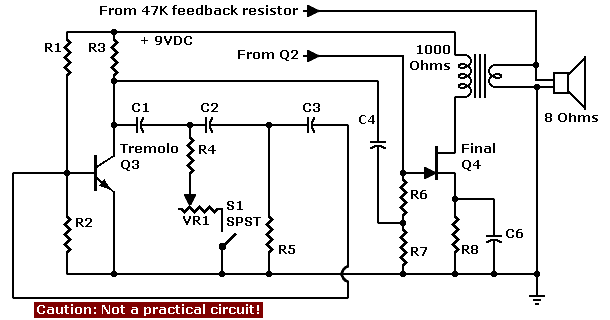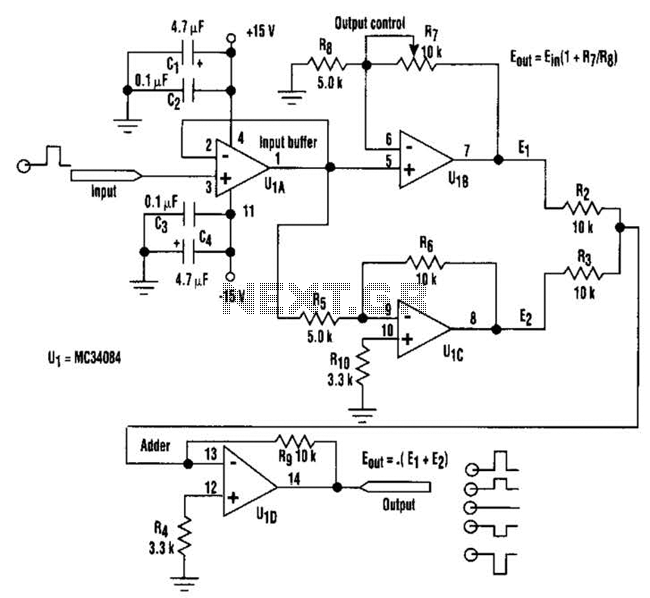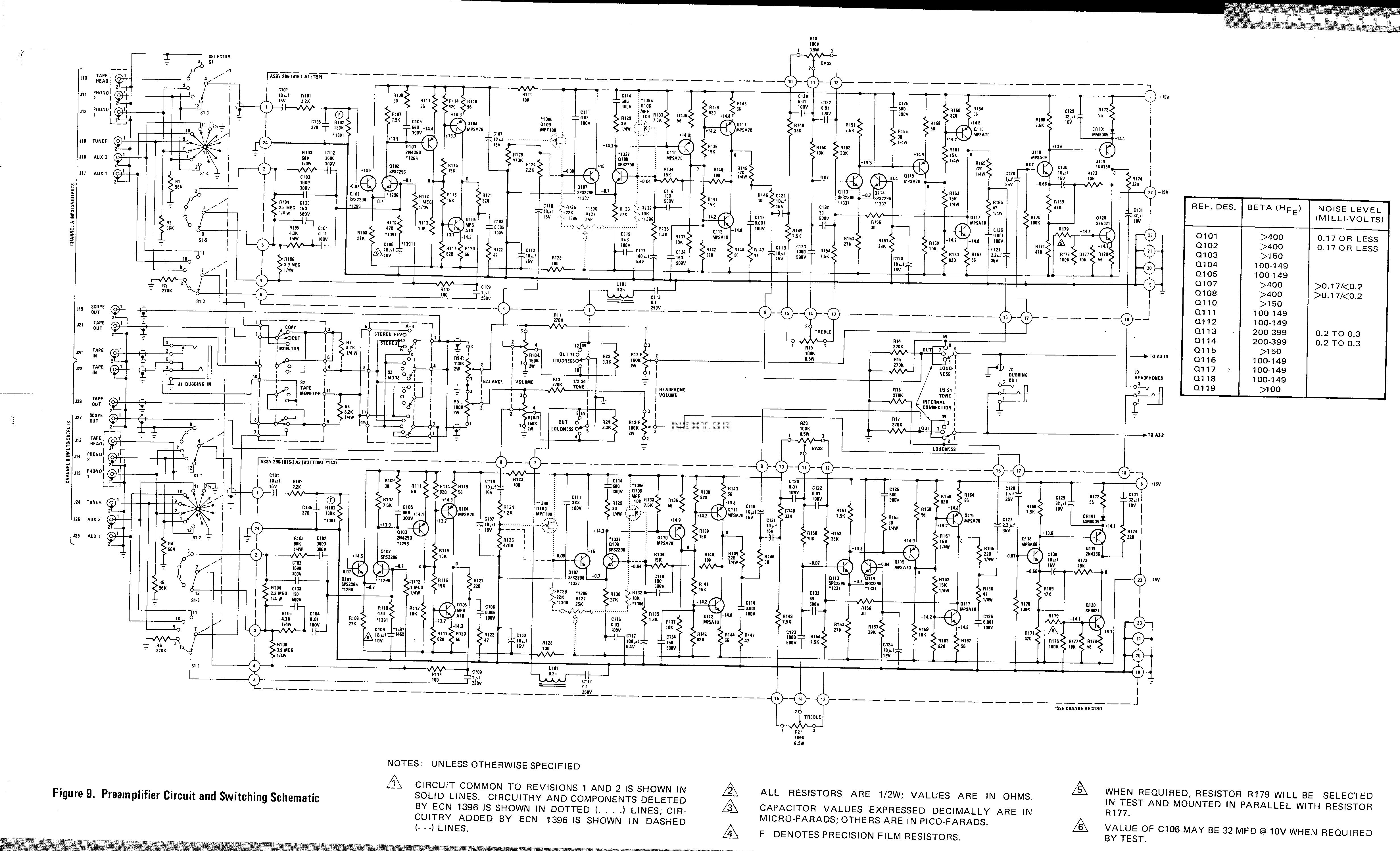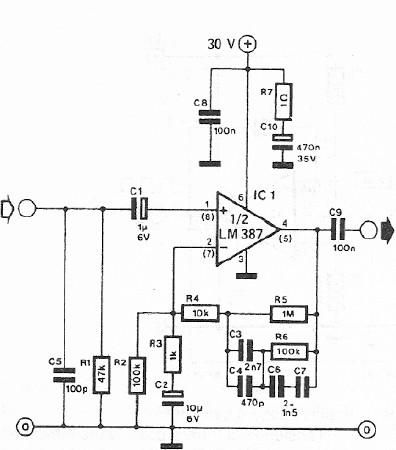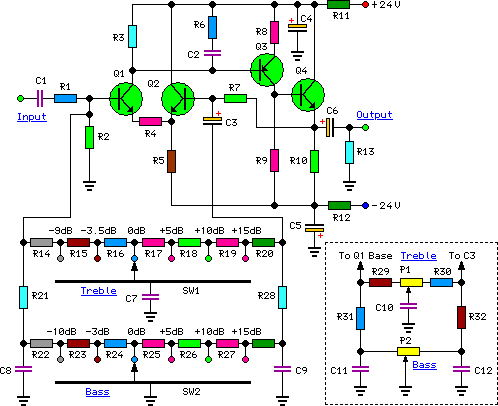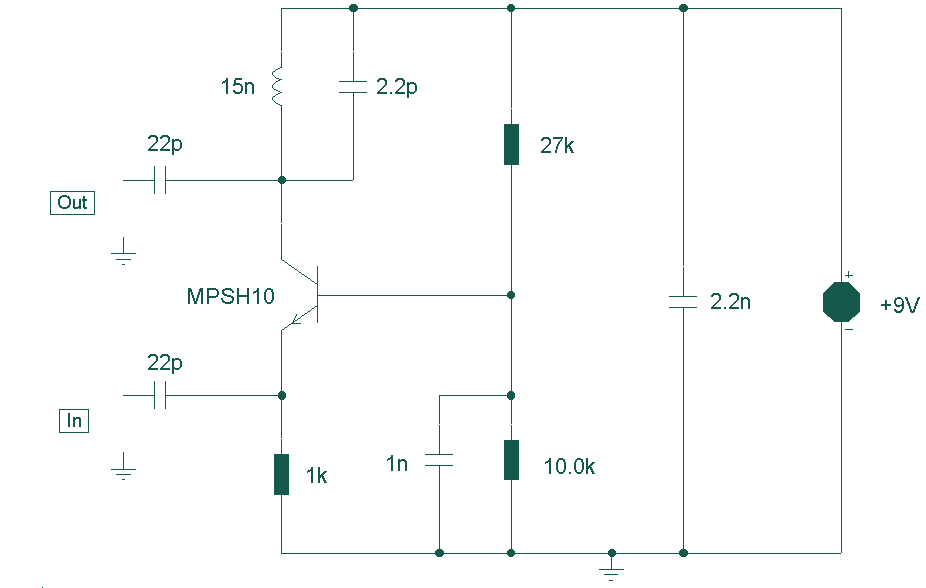
6-Meter preamplifier provides 20db gain
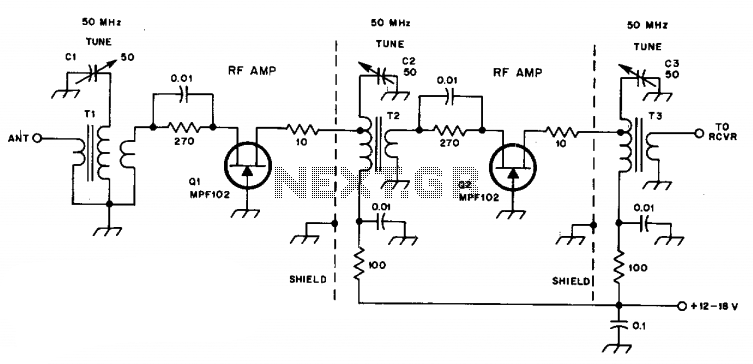
C1, C2, and C3 are miniature ceramic or plastic trimmers. T1 (main winding) has an inductance of 0.34 µH, utilizing 11 turns of No. 24 enameled wire wound on a T37-10 toroid core. The antenna winding consists of one turn, while Q1, the source winding, has three turns. The primary winding of T2 is composed of 11 turns of No. 24 enameled wire on a T37-10 toroid. The tap for Q1 drain is located three turns from the end of the winding at C2. The secondary winding of T2 has three turns. T3 is identical to T2, except that its secondary consists of one turn.
The circuit described involves several key components that are essential for its operation. The trimmer capacitors C1, C2, and C3 allow for fine-tuning of the circuit's resonant frequency, which is critical in applications such as RF (radio frequency) transmission and reception. Their miniature size enables compact designs, making them suitable for integration into smaller electronic devices.
The main transformer T1 is designed with a primary winding of 11 turns of No. 24 enameled wire on a T37-10 toroid core, providing a well-defined magnetic path and efficient inductance. The inductance value of 0.34 µH indicates that T1 is likely intended for high-frequency applications. The single turn antenna winding is designed to capture RF signals effectively, while the three turns of the source winding (Q1) help in establishing a suitable voltage level for further amplification or processing of the received signals.
Transformer T2, which shares the same construction as T1, plays a crucial role in signal transformation. Its primary winding also consists of 11 turns of No. 24 enameled wire on a T37-10 toroid, ensuring consistent performance characteristics. The tap for Q1 drain, located three turns from the end of the winding at C2, facilitates a specific connection point for circuit feedback or signal processing. The secondary winding of T2, composed of three turns, is designed to provide a stepped-down voltage or to couple signals to subsequent stages in the circuit.
T3 mirrors the design of T2, with the only distinction being its secondary winding, which consists of a single turn. This configuration suggests that T3 may be used for applications requiring a minimal voltage step-down or for specific matching purposes in the circuit.
Overall, the described circuit demonstrates a thoughtful arrangement of components aimed at optimizing performance in RF applications, emphasizing the importance of careful winding configurations and the use of trimmer capacitors for precise tuning.Cl, C2, and C3 are miniature ceramic or plastic trimmers- Tl (main winding) is 0.34 µ,. Use of 11 turns of no. 24 enameled wire on a T37-10 toroid core. The antenna winding has one turn, and Ql the source winding has three turns. T2 primary consists of 11 turns of no. 24 enameled wire on a T37-10 toroid. Tap Ql drain is three turns from C2 the end of the winding. The secondary has three turns. T3 is the same as T2, except its secondary has one turn.
The circuit described involves several key components that are essential for its operation. The trimmer capacitors C1, C2, and C3 allow for fine-tuning of the circuit's resonant frequency, which is critical in applications such as RF (radio frequency) transmission and reception. Their miniature size enables compact designs, making them suitable for integration into smaller electronic devices.
The main transformer T1 is designed with a primary winding of 11 turns of No. 24 enameled wire on a T37-10 toroid core, providing a well-defined magnetic path and efficient inductance. The inductance value of 0.34 µH indicates that T1 is likely intended for high-frequency applications. The single turn antenna winding is designed to capture RF signals effectively, while the three turns of the source winding (Q1) help in establishing a suitable voltage level for further amplification or processing of the received signals.
Transformer T2, which shares the same construction as T1, plays a crucial role in signal transformation. Its primary winding also consists of 11 turns of No. 24 enameled wire on a T37-10 toroid, ensuring consistent performance characteristics. The tap for Q1 drain, located three turns from the end of the winding at C2, facilitates a specific connection point for circuit feedback or signal processing. The secondary winding of T2, composed of three turns, is designed to provide a stepped-down voltage or to couple signals to subsequent stages in the circuit.
T3 mirrors the design of T2, with the only distinction being its secondary winding, which consists of a single turn. This configuration suggests that T3 may be used for applications requiring a minimal voltage step-down or for specific matching purposes in the circuit.
Overall, the described circuit demonstrates a thoughtful arrangement of components aimed at optimizing performance in RF applications, emphasizing the importance of careful winding configurations and the use of trimmer capacitors for precise tuning.Cl, C2, and C3 are miniature ceramic or plastic trimmers- Tl (main winding) is 0.34 µ,. Use of 11 turns of no. 24 enameled wire on a T37-10 toroid core. The antenna winding has one turn, and Ql the source winding has three turns. T2 primary consists of 11 turns of no. 24 enameled wire on a T37-10 toroid. Tap Ql drain is three turns from C2 the end of the winding. The secondary has three turns. T3 is the same as T2, except its secondary has one turn.
